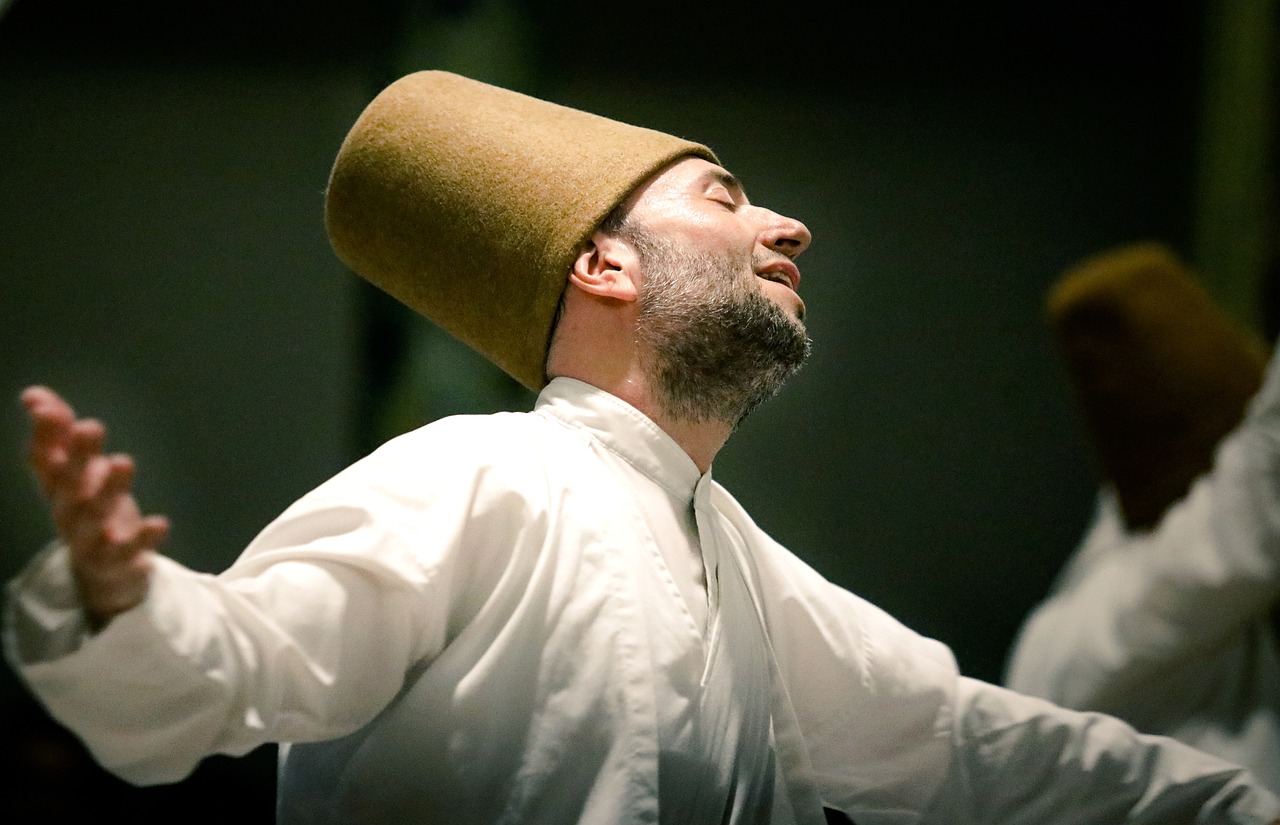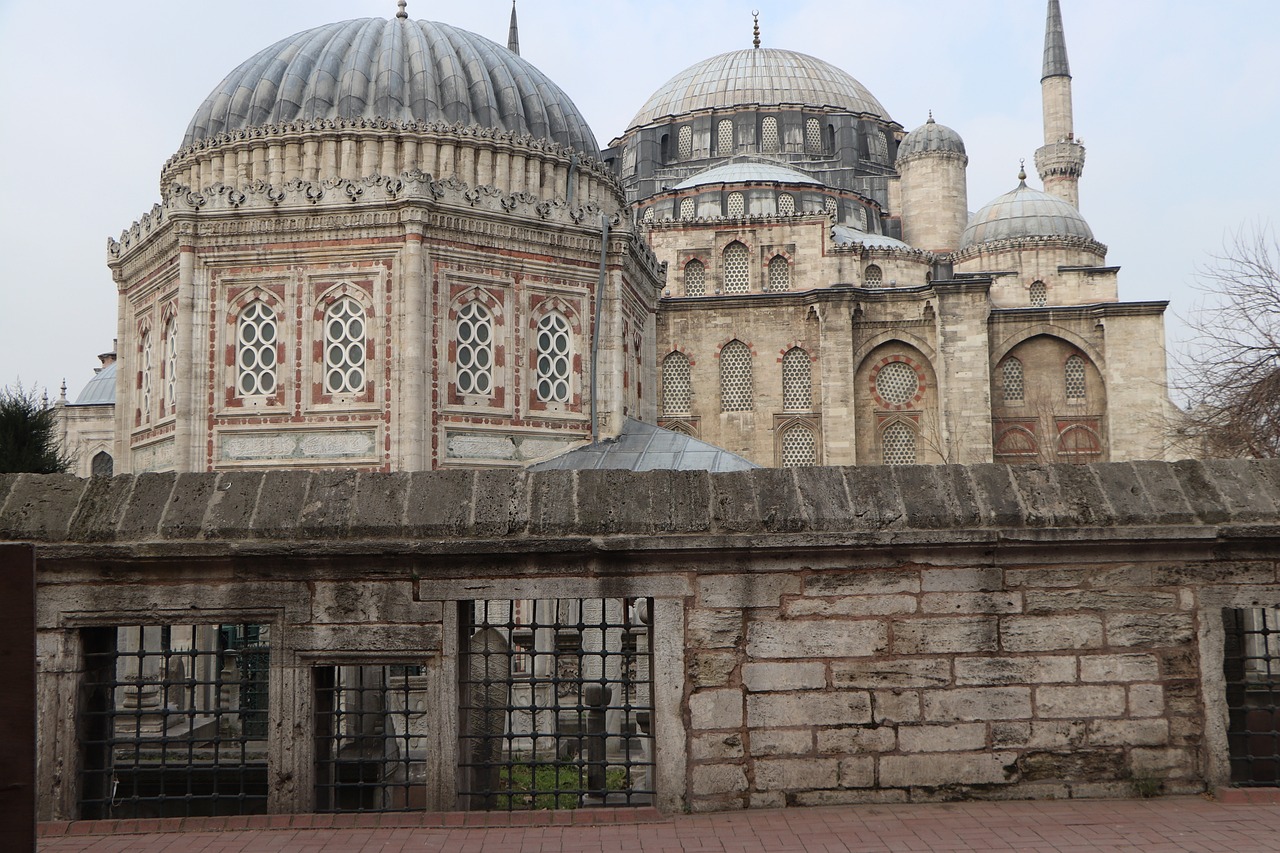Join us on a spiritual voyage as we explore the captivating Ajmer Sharif Dargah, a Sufi pilgrimage site in India. Immerse yourselves in the rich tapestry of Indian culture and history as we delve into the divine allure of religious tourism. Discover the sacred ambiance of this revered destination, where faith, history, and culture seamlessly converge, leaving visitors with a profound sense of awe and spiritual fulfillment.

1. History of Ajmer Sharif Dargah
The Ajmer Sharif Dargah has a rich and intriguing history that dates back several centuries. It holds great significance not only for Muslims but also for people of various religions and beliefs who seek spiritual solace and guidance. The Dargah is dedicated to Hazrat Khwaja Moinuddin Chishti, one of the most revered Sufi saints in India.
1.1 Origins of the Dargah
The origins of the Ajmer Sharif Dargah can be traced back to the 12th century when Hazrat Khwaja Moinuddin Chishti, also known as Garib Nawaz (the Benefactor of the Poor), arrived in Ajmer. He was born in the town of Sanjar in present-day Iran and traveled extensively across the Middle East before settling in Ajmer. It was here that he established a dargah, a shrine honoring a Sufi saint, which would later become a place of great significance for devotees.
1.2 Significance of the Dargah
The Ajmer Sharif Dargah holds immense significance for people of different faiths due to its reputation as a place of miracles and blessings. It is believed that offering prayers at the dargah can fulfill one’s desires and bring peace, prosperity, and spiritual enlightenment. Devotees from all over the world visit the dargah to seek solace, attain spiritual healing, and pay their respects to Hazrat Khwaja Moinuddin Chishti.
1.3 Sufi Saints associated with the Dargah
Over the centuries, numerous Sufi saints have been associated with the Ajmer Sharif Dargah. These saints, through their teachings and spiritual presence, have played a significant role in shaping the cultural and spiritual fabric of the dargah. Some of the notable saints include Hazrat Qutubuddin Bakhtiyar Kaki, Hazrat Nizamuddin Auliya, and Hazrat Amir Khusro. Their teachings and practices continue to inspire and guide devotees who visit the dargah.
2. Location and Architecture
The Ajmer Sharif Dargah is located in the heart of Ajmer, a city in the state of Rajasthan, India. Situated on the foot of the Taragarh Hill, the dargah attracts a large number of visitors due to its historical and architectural splendor.
2.1 Geographical Location of the Dargah
Ajmer is nestled in the Aravalli mountain range and is surrounded by picturesque landscapes. The city is centrally located in Rajasthan, making it easily accessible for both domestic and international travelers. Its proximity to major cities like Jaipur and Delhi further adds to its appeal as a pilgrimage destination.
2.2 Architectural Features of the Dargah
The architecture of the Ajmer Sharif Dargah is a magnificent blend of Mughal and Rajput styles. The main entrance, known as the Nizam Gate, is a marvelous example of Mughal architecture with intricate carvings and breathtaking craftsmanship. The dargah complex consists of several structures, including the Buland Darwaza, the Tomb of Akbar, and the Shahjahani Gate, each showcasing its unique architectural elements.
2.3 The Inner Courtyard and Mosque
As one enters the dargah complex, they are greeted by the serene and peaceful atmosphere of the inner courtyard. The courtyard is adorned with marble flooring and is surrounded by beautifully carved pillars and arches. In the center of the courtyard stands the Jama Masjid, a magnificent mosque dating back to the 12th century. The mosque is a place of worship for devotees and offers a tranquil space for prayers and reflection.
2.4 The tomb of Moinuddin Chishti
At the heart of the Ajmer Sharif Dargah lies the tomb of Hazrat Khwaja Moinuddin Chishti. The tomb, known as the Mazar-e-Sharif, is a site of deep reverence for devotees. It is covered with a pure white marble dome and intricate lattice screens, creating an ethereal ambiance. The tomb represents the final resting place of the revered saint and serves as a symbol of his spiritual power and guidance.
2.5 Urs Festival: A Celebration of Faith
The Urs festival, held annually at the Ajmer Sharif Dargah, is a grand celebration that attracts millions of devotees from around the world. The festival commemorates the death anniversary of Hazrat Khwaja Moinuddin Chishti and is marked by vibrant processions, devotional music, and spiritual gatherings. During this time, the dargah comes alive with the fervent prayers and devotion of the pilgrims, creating an atmosphere of unity and devotion.

3. The Life and Teachings of Hazrat Khwaja Moinuddin Chishti
3.1 Overview of Hazrat Khwaja Moinuddin Chishti’s Life
Hazrat Khwaja Moinuddin Chishti was born in 1141 AD in Sanjar, Iran. He received his early education in theology and Islamic jurisprudence before embarking on a spiritual journey across the Middle East. He traveled to various Sufi centers, seeking guidance from renowned scholars and saints. In 1190 AD, he arrived in Ajmer and founded the Ajmer Sharif Dargah, where he spent the remainder of his life serving humanity and spreading the message of love and peace.
3.2 Teachings and Philosophy of Hazrat Khwaja Moinuddin Chishti
Hazrat Khwaja Moinuddin Chishti emphasized the values of universal love, brotherhood, and compassion. He believed in the power of selfless service and the importance of devoting oneself to the welfare of others. His teachings emphasized the unity of all religions and advocated for the eradication of social barriers and discrimination. He promoted a holistic approach to spirituality, emphasizing the need for purity of heart, soul, and actions.
3.3 Influence of Hazrat Khwaja Moinuddin Chishti
Hazrat Khwaja Moinuddin Chishti’s teachings continue to inspire millions of people across the globe. His message of love and compassion transcends religious boundaries and serves as a guiding light for people seeking spiritual enlightenment. The Ajmer Sharif Dargah, as his final resting place, has become a center for devotees to connect with his teachings and experience the transformative power of his spiritual legacy.
4. Rituals and Practices at Ajmer Sharif Dargah
The Ajmer Sharif Dargah is a place of deep devotion and spiritual practices. Devotees engage in various rituals and practices to express their faith and seek blessings from the saint.
4.1 Offering of Chadar and Flowers
One common ritual at the dargah is the offering of chadar, a cloth sheet, and flowers at the tomb of Hazrat Khwaja Moinuddin Chishti. This act symbolizes reverence and devotion towards the saint and is believed to bring blessings and fulfillment of desires.
4.2 Qawwali at the Dargah
Qawwali, a form of devotional music, holds a special place at the Ajmer Sharif Dargah. Qawwals, or Sufi musicians, perform soul-stirring songs that praise the Prophet Muhammad and the Sufi saints. The qawwalis evoke a sense of spirituality and create a mystical ambiance that uplifts the souls of the listeners.
4.3 Lighting of Incense and Candles
Lighting incense sticks and candles is another common practice at the dargah. Devotees believe that the fragrance of incense and the light of the candles carry their prayers and aspirations to the divine realm, inviting blessings and protection.
4.4 Tie a Thread for a Wish
Another unique ritual at the Ajmer Sharif Dargah is tying a thread, known as a mannat ka dhaga, on the marble screens surrounding the tomb. Devotees tie the thread while making a wish or seeking divine intervention in their lives. It is believed that when the thread disintegrates naturally, the wish will come true.
4.5 Nazarana: Offering of Sweets and Savories
Devotees often offer nazarana, a tradition of presenting sweets and savories, at the dargah. This offering is considered a gesture of gratitude and is distributed among the devotees as a blessed prasad.
4.6 Devotees Seeking Blessings from the Saint
One of the most integral aspects of visiting the dargah is seeking blessings from the saint himself. Devotees approach the tomb of Hazrat Khwaja Moinuddin Chishti, place their hands on the marble screens, and offer fervent prayers. It is believed that the saint’s divine presence radiates through the tomb, offering solace and spiritual guidance to those who seek it.

5. Sufi Music and Qawwali Tradition at Ajmer Sharif Dargah
5.1 Importance of Sufi Music in Islam
Sufi music holds a significant place in Islamic worship and devotion. It is a manifestation of the believers’ love and longing for the divine and serves as a means of connecting with the spiritual realm. Sufi music, with its rhythmic beats and soulful melodies, transcends language and cultural barriers, touching the hearts and souls of people.
5.2 Traditional Qawwali Performances
Qawwali, a form of devotional music rooted in Sufism, is an integral part of the Ajmer Sharif Dargah’s cultural heritage. Qawwals, with their powerful vocals and rhythmic percussion, sing praises of the Prophet Muhammad and the Sufi saints, including Hazrat Khwaja Moinuddin Chishti. The qawwali performances at the dargah create an atmosphere of spiritual ecstasy, inviting devotees to lose themselves in the divine presence.
5.3 Prominent Qawwals associated with Ajmer Sharif Dargah
Several renowned qawwals have had a deep association with the Ajmer Sharif Dargah. The likes of Nusrat Fateh Ali Khan, Sabri Brothers, and Rahat Fateh Ali Khan have graced the dargah with their mesmerizing qawwali performances, captivating the hearts of devotees and leaving an indelible impact on the spiritual ambiance.
5.4 Musical Instruments used in Qawwali
Qawwali performances at the Ajmer Sharif Dargah involve a variety of musical instruments that add depth and richness to the melodies. The harmonium, tabla, dholak, and sarangi are some of the instruments commonly used. The rhythmic beats and melodious tunes of these instruments enhance the spiritual experience of the qawwali.
6. Annual Urs Festival at Ajmer Sharif Dargah
6.1 Significance of Urs Festival
The annual Urs festival at the Ajmer Sharif Dargah is a grand celebration that commemorates the death anniversary of Hazrat Khwaja Moinuddin Chishti. The word “Urs” translates to “wedding,” symbolizing the union of the saint’s soul with the divine. It is a time of great reverence and devotion, attracting devotees from different corners of the world.
6.2 Rituals and Ceremonies During Urs
The Urs festival is marked by various rituals and ceremonies that reflect the spiritual significance of the occasion. The gates of the dargah are opened early in the morning, allowing devotees to enter and pay their respects. The tomb is bathed in rose-scented water, and the sacred cloth covering it, known as the Ghilaf, is replaced. The dargah resonates with the sounds of qawwali performances, and devotees engage in prayers and seek blessings.
6.3 Gathering of Devotees and Sufi Scholars
The Urs festival witnesses a massive gathering of devotees, Sufi scholars, and spiritual seekers. People from different walks of life come together to connect with the spiritual energy and teachings of Hazrat Khwaja Moinuddin Chishti. The dargah transforms into a bustling hub of faith and spirituality, fostering a sense of unity and brotherhood among the attendees.
6.4 Spiritual Discourses and Sama
During the Urs festival, spiritual discourses and Sama sessions are conducted, providing devotees with an opportunity to deepen their understanding of Sufi philosophy and the teachings of Hazrat Khwaja Moinuddin Chishti. Sama is a unique form of devotional music that combines poetry, music, and prayer, leading to a heightened state of spiritual ecstasy.
7. Ajmer Sharif Dargah and Cultural Syncretism
7.1 Harmonious Coexistence of Different Religions
The Ajmer Sharif Dargah stands as a testament to the harmonious coexistence of different religions in India. Despite being a Muslim pilgrimage site, it attracts devotees from all faiths who believe in the divine power of Hazrat Khwaja Moinuddin Chishti. The dargah serves as a bridge between diverse religious communities, fostering an environment of mutual respect and understanding.
7.2 Influence of Ajmer Sharif Dargah on Indian Culture
The Ajmer Sharif Dargah has made a significant impact on Indian culture, emphasizing the values of religious tolerance and unity. Its inclusive ethos has influenced the cultural fabric of the region, promoting a sense of brotherhood and acceptance among people of different religions. The dargah’s spiritual teachings and practices have become an integral part of the syncretic Indian culture.
7.3 Contributions to Sufi Poetry and Literature
The Ajmer Sharif Dargah holds a special place in Sufi poetry and literature. Renowned Sufi poets such as Hazrat Amir Khusro and Bulleh Shah have composed verses that pay homage to Hazrat Khwaja Moinuddin Chishti and his spiritual legacy. The dargah has been a source of inspiration for generations of poets, who continue to write and recite verses that reflect the teachings and divine grace associated with the saint.
8. Ajmer Sharif Dargah’s Role in India’s Independence Struggle
8.1 Presence of Freedom Fighters at the Dargah
The Ajmer Sharif Dargah played an important role in India’s independence struggle. Many freedom fighters, such as Gandhi, Nehru, and Subhas Chandra Bose, visited the dargah to seek spiritual guidance and blessings during the tumultuous times of colonial rule. The divine atmosphere of the dargah provided solace and inspiration to these leaders in their quest for freedom.
8.2 The Role of Sufi Saints as Inspirational Figures
Sufi saints like Hazrat Khwaja Moinuddin Chishti have been influential figures in India’s freedom movement. Their teachings of peace, equality, and justice resonated with the principles of independence, inspiring many activists to fight for the country’s liberation. Sufi saints promoted unity and stood against oppression, becoming beacons of hope for the freedom fighters.
8.3 Impact of Ajmer Sharif Dargah on the Independence Movement
The Ajmer Sharif Dargah’s association with the independence movement instilled a sense of patriotism and resilience among the Indian population. It served as a meeting place for like-minded individuals and facilitated discussions on political and social issues. The dargah became a symbol of resistance against colonial rule and provided spiritual support to those involved in the struggle.
9. The Global Appeal of Ajmer Sharif Dargah
9.1 Pilgrimage Destination for Muslims worldwide
The Ajmer Sharif Dargah attracts millions of Muslims from around the world, who consider it a sacred pilgrimage site. Devotees from countries like Pakistan, Bangladesh, Iran, and Afghanistan make the journey to Ajmer to seek blessings and attain spiritual fulfillment. The dargah’s reputation as a place of miracles and healing draws people from diverse backgrounds and cultures.
9.2 Non-Muslim Visitors and Seekers of Spiritual Solace
The spiritual aura and inclusive nature of the Ajmer Sharif Dargah also appeal to non-Muslim visitors and seekers of spiritual solace. People from different religious backgrounds visit the dargah to experience its serene ambiance and connect with the divine energy. The dargah serves as a sanctuary for those seeking a moment of reflection, regardless of their religious beliefs.
9.3 Facilitation for Visitors from Different Countries
The Ajmer Sharif Dargah administration ensures that the dargah remains accessible and accommodating for visitors from different countries. Facilities such as lodging, medical aid, and community kitchens are provided to pilgrims, catering to their needs during their stay. The administration works diligently to make the experience of visiting the dargah smooth and enriching for all.
9.4 Impact on Tourism in Rajasthan
The Ajmer Sharif Dargah has significantly impacted tourism in Rajasthan, attracting a large number of domestic and international tourists. Its historical and spiritual charm, coupled with the vibrant culture and scenic beauty of Rajasthan, make it a must-visit destination for travelers. The dargah, with its cultural and religious significance, has become an integral part of Rajasthan’s tourism offerings.
10. Ajmer Sharif Dargah: A Beacon of Peace and Brotherhood
10.1 Promoting Interfaith Harmony
The Ajmer Sharif Dargah stands as a beacon of peace and interfaith harmony. The dargah’s inclusive nature and the acceptance of devotees from different religions reflects the essence of Sufi teachings that emphasize unity and love for all. It serves as a living example of religious coexistence, nurturing an environment of mutual respect and understanding.
10.2 Social Welfare Initiatives
Alongside its spiritual significance, the Ajmer Sharif Dargah has been actively involved in various social welfare initiatives. The dargah administration runs hospitals, schools, and charitable institutions that cater to the needs of the underprivileged sections of society. These initiatives embody the teachings of Hazrat Khwaja Moinuddin Chishti, emphasizing the importance of selfless service and compassion towards fellow human beings.
10.3 Importance of Ajmer Sharif Dargah in Today’s World
In today’s world, torn apart by conflicts and divisions, the Ajmer Sharif Dargah serves as a symbol of hope and unity. Its teachings and practices inspire individuals to embrace diversity, practice compassion, and work towards creating a harmonious society. The dargah’s message of love and peace extends far beyond its walls, resonating with people who long for a world driven by understanding and acceptance.
In conclusion, the Ajmer Sharif Dargah represents a profound blend of spirituality, cultural heritage, and interconnectedness. Its historical significance, architectural splendor, and the teachings of Hazrat Khwaja Moinuddin Chishti have left an indelible mark on the hearts and minds of millions of devotees. The dargah’s enduring influence, both in India and worldwide, is a testament to the power of divine love and the human spirit.
